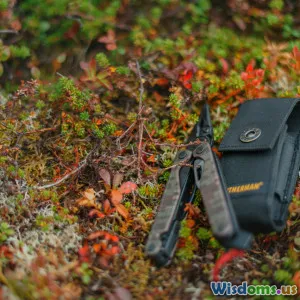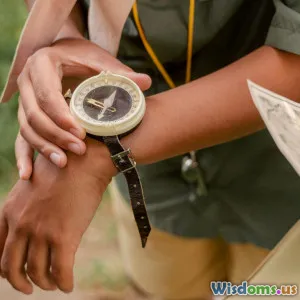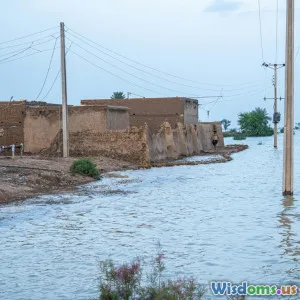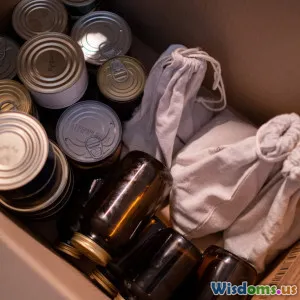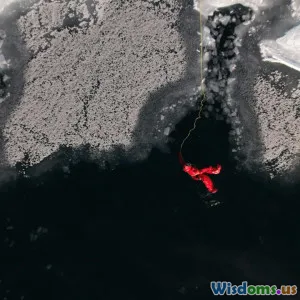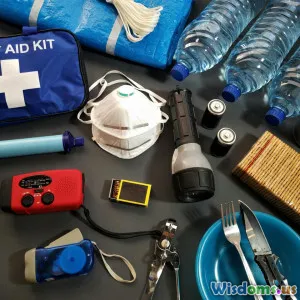
How to Build an Emergency Survival Kit
6 min read Learn essential steps to create a comprehensive emergency survival kit for various situations and stay prepared for any adventure. (0 Reviews)
How to Build an Emergency Survival Kit
When it comes to outdoor adventures or emergency situations, having a well-prepared survival kit can mean the difference between life and death. Whether you’re hiking in a remote area, camping, or simply preparing for unforeseen events, understanding what to include in your emergency survival kit is essential. In this article, we will discuss the components of a comprehensive survival kit, tips for customizing it according to your needs, and the importance of regular maintenance.
Why You Need a Survival Kit
Emergency situations can arise unexpectedly, and being unprepared can lead to dire consequences. Natural disasters, accidents, or getting lost in the wilderness can happen to anyone. A well-equipped survival kit allows you to address basic needs such as shelter, warmth, food, water, and first aid. It’s not just for outdoor enthusiasts; having a survival kit at home can also provide peace of mind.
Essential Components of a Survival Kit
1. Water and Water Purification
- Water Supply: Pack at least one gallon of water per person per day for at least three days.
- Water Purification Tablets: Include purification tablets or a portable water filter to ensure you have safe drinking water.
2. Food Supplies
- Non-Perishable Food: Include high-energy foods such as granola bars, dried fruits, nuts, and freeze-dried meals. Choose items that have a long shelf life.
- Cooking Equipment: If possible, include a small camping stove or a portable cooking system alongside a lightweight cooking pot.
3. Shelter and Warmth
- Emergency Space Blanket: Lightweight and compact, these blankets retain body heat and can provide warmth in emergencies.
- Tarp or Emergency Tent: A durable tarp can serve as a shelter from the elements.
4. First Aid Kit
- Comprehensive Kit: Include band-aids, antiseptic wipes, pain relievers, gauze, and any personal medications. Consider adding a first aid manual.
5. Multi-tool or Knife
- Versatile Tool: A multi-tool can serve numerous purposes, from cutting rope to opening cans.
6. Fire-starting Supplies
- Lighters and Waterproof Matches: Both should be included to ensure you can start a fire. A fire starter kit can also be beneficial.
7. Navigation Tools
- Map and Compass: Even in the age of GPS, having a physical map and a compass is crucial if technology fails.
- GPS Device: If you’re venturing into remote areas, consider carrying a portable GPS device.
8. Light Sources
- Flashlight with Extra Batteries: Opt for a lightweight flashlight, and always have extra batteries on hand.
- Headlamp: A headlamp frees up your hands for tasks while providing ample light.
9. Emergency Whistle
- Sound Signaling: A whistle can help signal for help without straining your voice, which is especially important if you’re lost or injured.
10. Personal Documents and Cash
- Important Documents: Include copies of your ID, insurance information, and any important contacts.
- Cash: Small denominations in cash can be useful in emergencies.
Customizing Your Kit
Your survival kit should be tailored to your specific needs based on factors such as:
- Location: Different environments may require different gear (e.g., desert vs. mountain).
- Duration: Consider how long you expect to be in the wilderness or in an emergency situation.
- Personal Needs: Include any personal medications or items specific to health conditions.
Maintaining Your Survival Kit
An emergency survival kit is only effective if it is well-maintained. Regularly check the contents of your kit at least twice a year. Replace expired food and medications, and ensure that your supplies are in good condition. Consider seasonal changes that may affect the items you carry, such as warmer clothing in winter.
Conclusion
Building an emergency survival kit is an essential step for anyone who enjoys outdoor adventures or wants to be prepared for emergencies. By carefully selecting the right items and customizing your kit to fit your needs, you can ensure that you are ready for any situation that may arise. Take the time to invest in your safety and peace of mind, and remember to maintain your kit regularly for optimal readiness. Adventure with confidence, knowing you’re well-prepared for the unexpected!
Rate the Post
User Reviews
Popular Posts
















